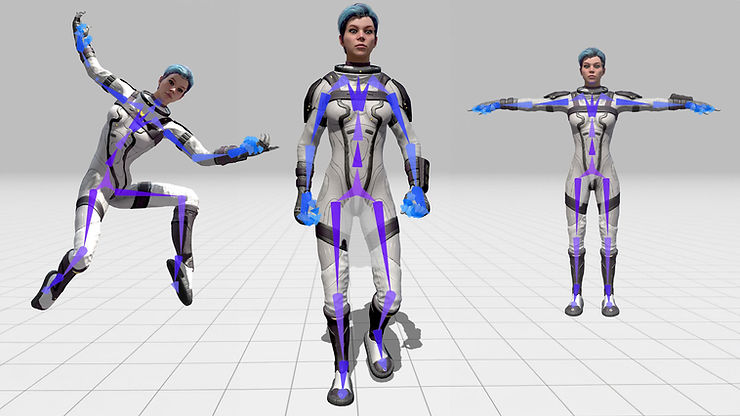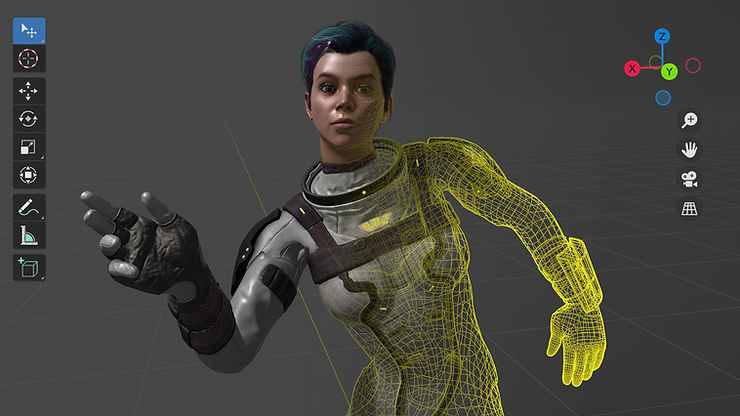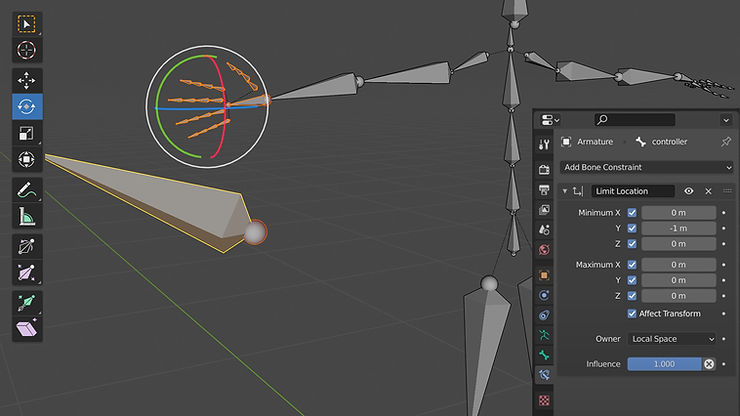What is 3D Rigging? An Essential Guide to How It Works

Creating a 3D model is one thing, but making it move is a whole different art. This is where rigging comes in. 3D animation is the process of making digital objects move, and rigging is one of the methods for animating via a skeleton system. As digital identity becomes even more important, 3D rigged models are taking the digital art world by storm.
What is rigging in animation?

Let’s say you’ve drawn a stick figure — how do you animate it? Traditional efforts of animation would be either redrawing or editing the section of the stick figure you’re moving frame-by-frame, stop-motion style. The modern way for 3D use is to rig it.
Rigging is a process of attaching a digital skeleton to a drawing so you can program the skeleton to move at your command — hence moving your drawing also. This is a revolutionary way of adding movement to drawings, as traditional efforts required artists to re-draw or edit their creations frame-by-frame.
Rigging allows artists to ‘connect’ their drawings to a digital skeleton and control their drawings by simply moving the skeleton. This saves time, money, and effort, as animators can focus their creativity on the art to dedicate their efforts to the larger animation.
What is 3D rigging?
Rigging models or objects in 3D is much more complicated, as both the model and its movements need to work in 3 spatial dimensions. For 3D rigging to work, three core components must be developed: the model, the skeleton, and control systems.
The 3D model

Creating the model is an amazing experience. Drawing and designing a 3D model allows for the artist to harness their full creativity. The opportunities are endless for making your own 3D model, but keep in mind: everything you create must be rigged to the skeleton in the next step.
The skeleton

The skeleton is the cornerstone of 3D animation rigging. Your 3D model can have six arms or even four wings — but every limb or accessory must be connected to your skeleton for them to be functional in your animation.
The skeleton of a 3D model, just like humans, are made up of bones that each control a section of the 3D model.
All skeletons for humanoid models start at the hips and torso, because they’re then connected to the upper arms and legs, then fore arms and lower legs, then your hands and feet. This hierarchy is important because without the previous connection, the movements of the 3D model wouldn’t be human-like.
The control systems

We now understand models and how skeletons drive the model’s movements. Finally, we have control systems. Adding controls to your rigged model makes everything clearer and easier to understand — instead of animating the model itself, creating shapes that represent the different parts of the character make the animation process much easier.
For example, if we tie a 3D model’s leg to a rectangle, the rectangle now represents the leg. If we want the leg to rotate 45°, we simply rotate the rectangle 45°. This simplification makes the animating process easier.
Want to try rigging without designing a 3D model? Try the VIVERSE Avatar Creator to create a realistic 3D model with an already-rigged skeleton!
The art of character rigging
The power of rigging lies in its ease of use and realism. What differs character rigging from generic object rigging is that you also need to rig in the realism and the mechanics of the human body.
Not every limb or joint on the human body works the same, and the details really do stand out when you animate a living model over an object. This is why you can assign weights to control how much influence the bones have over a specific part of the skin/mesh of the model.
Advanced features

More advanced 3D models allow for the use of forward kinematics and inverse kinematics, which decide how the bones move. In layperson’s terms, forward kinematics commands every bone of a limb, while inverse kinematics uses the location of the furthest bone of a limb (the hand or feet) to predict where the previous bone is.
Motion capture accessories like the VIVE Ultimate Tracker can allow for direct translation of real-life movements straight to a 3D model if everything is rigged properly. Facial rigging (connecting facial movements to the model’s facial bones) needs to be done for facial tracking with the VIVE Full Face Tracker.
3D rigging gives creators in any industry the opportunity to let their creativity shine. VTubers can translate their real-life movements straight to their audience, gamers can bring their actions onto their in-game avatar, and the animation industry can eliminate tedious creative processes with person-to-character rigging.
Where should I start?
You can start rigging 3D models and getting a feel for the process immediately. The best 3D rigging software are Maya, Blender, Cinema 4D, and Max due to its blend of complex tools merged with an intuitive UI.
Practice makes perfect with rigging. Start with some easy 2D models to get a basic grasp of the three core elements of model, skeleton, and control systems. Gradually move your way up to 3D models and incorporate some of the more advanced elements mentioned, like weight painting and kinematics.
When things start getting complicated, don’t forget to use the power of the internet. There’s an unlimited number — well, not unlimited, but a lot! — of YouTube tutorials, online courses, and webpages to give you a deeper look into the art of 3D drawing and animation.
Skip designing and jump into animating!

So, there we have it! Rigging is a fun way to build animations by simply assigning a skeleton to any 3D model and making it move by command. You can skip past designing a 3D model and jump straight to rigging by trying out the VIVERSE Avatar Creator to create a 3D model with an already rigged skeleton. But watch out — you might get sidetracked by the amazing selection of 3D Worlds and adventures in VIVERSE.